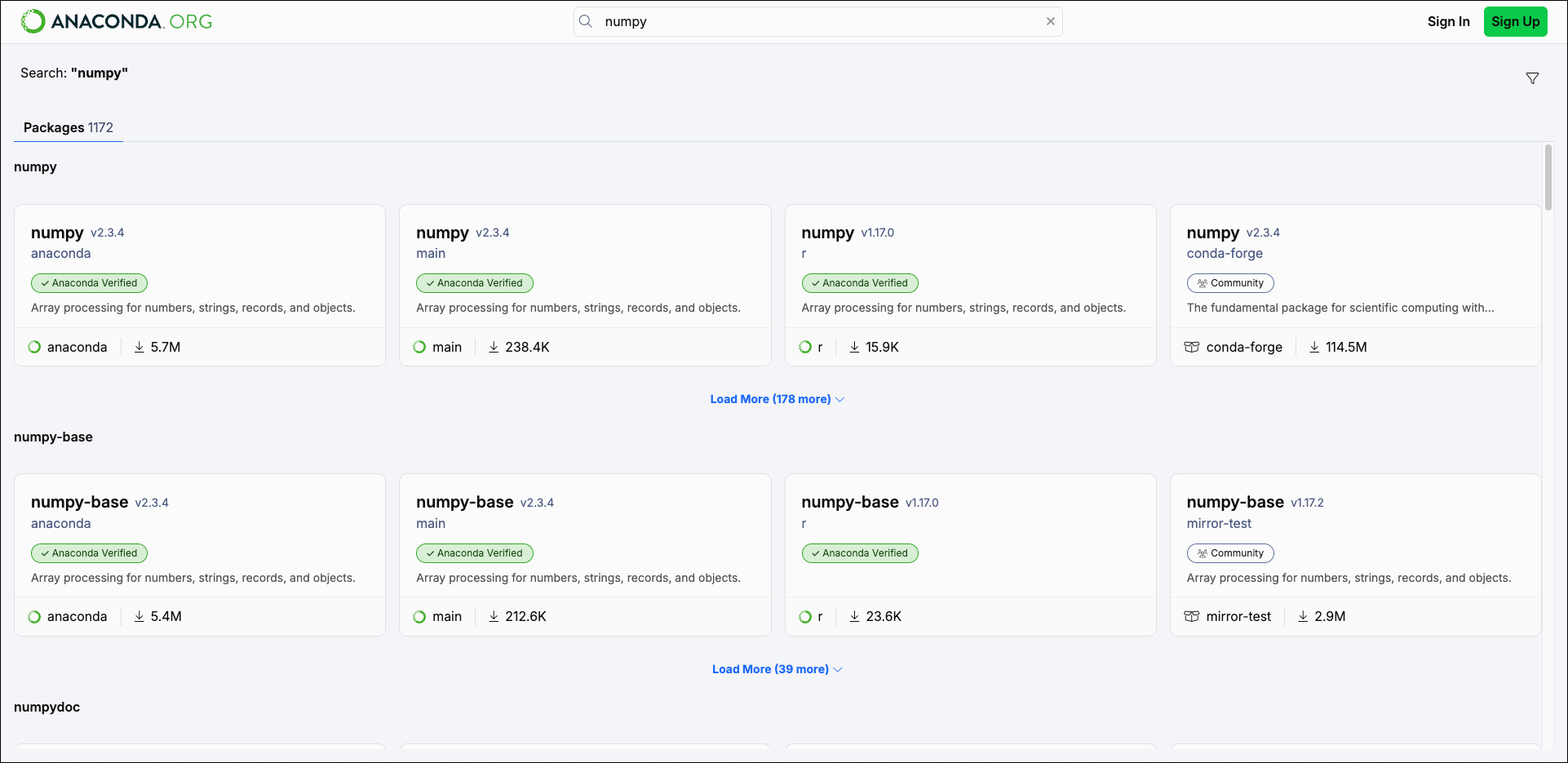Anaconda is releasing a new user experience that is affecting some of the pages on Anaconda.org. Search and the package details pages have a new look and feel, but be aware that some pages will still have the old interface for now.
An Anaconda account and a token with appropriate permissions are required to access other users’ private packages. See Tokens.
Searching for public packages
Search for packages by name or partial name using the search bar. The package card includes the package name, latest version, channel, number of downloads, and a brief description.
- Channel - The channel that contains the package. This list contains Anaconda channels, as well as conda-forge and other community and user channels.
- License - The license applied to the package.
- Platform - The platform or system architecture that the package is available for. “Noarch” packages are built to work on all platforms.
- Access - Whether the package is public or private. You need a specific token to view other users’ private packages. See Tokens.
- Type - The package type.
Viewing package information
Select a package card to open that package’s detail page. Each page provides valuable information about the package, as outlined below:
1
Package Introduction
This section contains the following:
- Breadcrumbs linking back to the package’s channel (channel / package)
- The name of the package
- A chip describing whether the package is or
- A short package description
2
Tabs
A set of tabs giving you access to more package information:
- Overview - General information further outlined in the descriptions below. Selected by default.
- Files - Lists of package archive files (such as
.condaand.tar.bz2) that you can download. - Labels - A list of package labels created by the package maintainer.
- Badges - A list of badges relevant to the selected package and resources for embedding the badges in your web page.
3
Version
Use the dropdown to select the package version you want to download. The information on the Overview tab changes when the version changes. The latest version is selected by default.
4
Installation
Installation commands for the package version selected. Select the command to copy it for use in your command line interface (CLI).
5
Usage Tracking
Use the Downloads and Updates tables to view the usage statistics for your selected package.
- Downloads table - Compares download numbers within the last six months. Use the Version dropdown above the table to add or remove package versions you want to compare.
- Updates table - Displays number of updates released by the package’s maintainers. Select Monthly to view updates within the last four months or Weekly to view updates within the last seven weeks.
6
Description
A description of the selected package.
7
About
General information about the selected package, including the date and time when the package was last updated, the package’s license, supported platforms and architectures, and relevant links for more information about the package.